LED lighting has been gaining popularity for its energy efficiency and sustainability. But what exactly is LED lighting, and how does it work?
We will explore the technology behind LED lighting and its environmental, economic, and social benefits. We will also discuss the challenges of implementing LED lighting and provide practical tips for individuals and businesses looking to make the switch.
Discover how LED lighting can not only save you money but also contribute to a greener future.
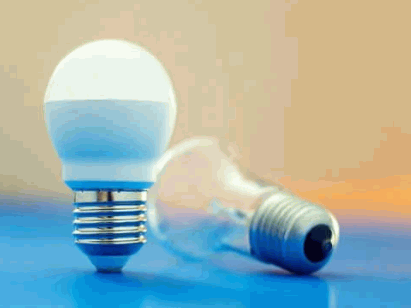
What Is LED Lighting?
LED lighting refers to a cutting-edge technology that offers energy-efficient illumination, surpassing traditional incandescent and CFL lights. The concept of LED lighting traces back to the pioneering work of Thomas Edison.
Thomas Edison’s invention of the incandescent bulb in the late 19th century marked a significant milestone in lighting history, revolutionizing the way we illuminate our surroundings. As technology progressed, there was a growing need for more energy-efficient and sustainable lighting solutions.
LED technology emerged as a game-changer, providing a longer lifespan, lower energy consumption, and reduced environmental impact compared to its predecessors. This shift towards LED lighting not only revolutionized the industry but also paved the way for innovative lighting designs and smart lighting systems.

How Does LED Lighting Work?
LED lighting operates through semiconductor technology, where electrons interact with electron holes within the diode to generate light. This process ensures efficient light dispersement while minimizing UV emissions.
When an electric current passes through the semiconductor material of the LED, it causes the electrons to move from the negatively charged side to the positively charged side. As the electrons move across the semiconductor material, they combine with electron holes, creating a release of energy in the form of photons. This phenomenon is known as electroluminescence, and it is what produces the visible light in LED bulbs.
One of the key advantages of LED technology is its ability to offer precise light dispersement, making it highly efficient in directing light exactly where it is needed. LEDs produce very little heat compared to traditional lighting sources, making them energy-efficient and environmentally friendly. The reduced UV emissions of LED lights also make them safer for both human health and the environment, as they minimize the potential risks associated with prolonged exposure to UV rays.
Check out: Are LED Ceiling Lights Any Good

What Makes LED Lighting Sustainable?
LED lighting stands out as a sustainable choice due to its remarkable energy savings, extended lifespan, high efficiency, and exceptional durability. The environmental benefits of LED technology further enhance its sustainability.
By consuming significantly less energy than traditional incandescent bulbs, LED lights not only reduce electricity bills but also lower overall greenhouse gas emissions. The long lifespan of LEDs means fewer replacements are needed, leading to less waste and a lighter environmental footprint. The high efficiency of LED lighting translates to less energy wasted as heat, making them an ideal choice for eco-conscious consumers. Their durability ensures less maintenance and fewer resources used for replacements, contributing to a greener future.
Energy Efficiency
LED lighting excels in energy efficiency, offering higher lumens per watts output compared to conventional lighting sources. This efficiency contributes to reducing global electricity consumption and promoting sustainable energy practices.
When you delve deeper into LED technology, you’ll find that its high efficiency is a result of converting a higher percentage of energy into visible light rather than heat, unlike traditional incandescent bulbs. This not only saves on energy costs but also extends the lifespan of LED bulbs, reducing the frequency of replacements and waste. The long-lasting nature of LEDs significantly contributes to minimizing environmental impact and e-waste accumulation worldwide.
Long Lifespan
LED lighting boasts an impressive service life, significantly longer than traditional lighting sources. This extended longevity reduces the need for frequent maintenance, offering cost savings and convenience to users.
LED lighting’s extended lifespan not only minimizes the hassle of replacing bulbs frequently but also translates into fewer maintenance requirements. It’s a game-changer for commercial spaces, where uninterrupted lighting is crucial for operations. With LED technology, businesses can enjoy reduced downtime due to maintenance tasks and allocate resources more efficiently. The long-term benefits of decreased maintenance costs coupled with enhanced user convenience make LEDs a smart investment for any environment.
Low Heat Emission
LED lighting stands out for its low heat emission, making it ideal for various environments including those with extreme temperatures. Efficient LED thermal management ensures performance even in cold or hot conditions.
LED bulbs are designed to convert most of the energy they consume into light rather than heat, unlike traditional incandescent bulbs. This low heat emission not only contributes to energy efficiency but also enhances the durability of LED lighting systems. The reduced heat output plays a critical role in maintaining a stable operational environment, particularly in settings with temperature variations.
No Harmful Substances
LED lighting is eco-friendly as it contains no harmful substances, making it easy to recycle and dispose of responsibly.
The recyclable nature of LEDs not only reduces the amount of electronic waste ending up in landfills but also minimizes the need for extracting new raw materials. This helps in preserving the environment and conserving resources for future generations.
Durability
LED lighting is renowned for its durability and design flexibility, allowing for versatile applications in various settings. The robust construction of LEDs ensures longevity and adaptability in different lighting designs.
LEDs are constructed to withstand various environmental conditions, making them ideal for both indoor and outdoor applications. Their sturdy build also allows for unique design possibilities in architectural lighting, accentuating the aesthetic appeal of spaces. The adaptability of LED lighting further extends to specialized uses such as underwater lighting, signage, and automotive lighting, showcasing the vast array of possibilities these fixtures offer. The energy efficiency of LEDs enhances their sustainability, making them a preferred choice for eco-conscious consumers and businesses alike.
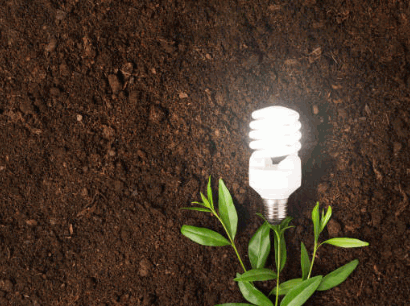
What Are The Environmental Benefits Of LED Lighting?
LED lighting offers substantial environmental benefits by reducing carbon footprint, lowering energy consumption, and promoting sustainability. These advantages align with global efforts to mitigate climate change.
LED lighting plays a crucial role in reducing greenhouse gas emissions due to its energy efficiency and longevity. LED technology consumes significantly less energy compared to traditional lighting sources, resulting in a smaller carbon footprint throughout its lifespan. By lowering energy consumption, LED lighting helps decrease the demand for fossil fuels and reduces harmful emissions into the atmosphere.
The sustainability of LED lighting is evident in its durability and recyclability. LED bulbs last much longer than incandescent or fluorescent bulbs, leading to less frequent replacements and waste generation. LED lights are free of toxic substances like mercury, making them environmentally friendly options that contribute to a cleaner ecosystem.
Reduces Carbon Emissions
LED lighting plays a crucial role in reducing carbon dioxide emissions, supporting sustainable lighting practices in countries like the United States. The adoption of LEDs contributes significantly to lowering carbon footprints.
LED lighting not only helps in minimizing energy consumption but also enhances the overall energy efficiency of lighting systems. This transition to LED technology is pivotal in combatting climate change and promoting a greener environment. By utilizing LED lighting solutions, households and businesses can significantly reduce their energy expenditure and contribute to a more sustainable future. In the United States, the shift towards LED lighting has shown immense promise in reducing greenhouse gas emissions and conserving energy resources. This shift aligns with global efforts to create a more environmentally conscious society.
Reduces Waste
LED lighting minimizes waste generation through its recyclable nature and responsible disposal practices.
The longevity of LED lighting not only contributes to reducing waste but also plays a crucial role in sustainable resource utilization. By implementing effective recycling methods for LEDs, we can significantly decrease the environmental impact of electronic waste. Ensuring that these lights are properly recycled at the end of their lifespan helps to conserve valuable resources and minimize the strain on our planet’s ecosystems.
Efficient LED recycling is essential in maintaining a circular economy and promoting a greener future for generations to come.
Saves Natural Resources
LED lighting contributes to saving natural resources by being energy-efficient and aligning with sustainable practices advocated by organizations like the Department of Energy. This conservation approach promotes long-term sustainability.
By consuming significantly less energy than traditional lighting sources, LED lighting significantly reduces electricity usage, thereby decreasing the demand for power plants and the associated carbon emissions. This aligns perfectly with the energy-saving initiatives promoted by various organizations aiming to reduce environmental impact.
The long lifespan of LED lights minimizes waste production, emphasizing its role in sustainable resource management and conservation efforts. The widespread adoption of LED lighting is a crucial step towards a more environmentally friendly future.

What Are The Economic Benefits Of LED Lighting?
The economic advantages of LED lighting include lower energy costs, reduced maintenance expenses, and increased productivity. These benefits make LED technology a cost-effective and efficient lighting solution.
LED lighting is revolutionizing the way businesses and homeowners approach lighting solutions, offering significant cost savings over traditional incandescent or fluorescent options. By consuming less energy, LED lights not only reduce electricity bills but also contribute to environmental sustainability.
Lowering energy costs is a major selling point, particularly for organizations looking to cut operational expenses and improve their bottom line. The longevity of LEDs means that they require less frequent replacement, translating into reduced maintenance expenses in the long run.
The quality of light provided by LEDs is conducive to enhancing workplace efficiency, leading to increased productivity and employee satisfaction. This unique combination of benefits positions LED technology as the optimal choice for those seeking a sustainable, cost-effective, and efficient lighting solution.
Lower Energy Costs
LED lighting significantly reduces energy costs by consuming less electricity and operating at low voltage levels. This energy efficiency translates into substantial savings for individuals and businesses adopting LED technology.
LEDs have a much lower wattage than traditional incandescent bulbs, which results in decreased energy consumption. In addition, their low voltage operation means less energy is lost as heat compared to conventional lighting options. This not only helps in cutting down electricity bills but also contributes to a more sustainable environment. LED lighting is a smart investment for anyone looking to save money in the long run while reducing their carbon footprint.
Lower Maintenance Costs
LED lighting’s extended service life results in lower maintenance costs compared to traditional lighting sources. The durability of LEDs minimizes the need for frequent replacements, offering cost-effective lighting solutions.
With traditional lighting, frequent bulb changes and maintenance activities can add up to substantial expenses over time. In contrast, the long lifespan of LED lights significantly reduces the need for replacements, resulting in less hassle and cost for users. This enhanced durability not only brings convenience but also leads to economic benefits in the form of reduced electricity consumption and lower maintenance requirements, making LED lighting a smart choice for those looking to save money in the long run.
Increased Productivity
LED lighting contributes to increased productivity by providing efficient and quality illumination, enhancing work environments. Innovations like LED iBond further optimize artificial lighting solutions for improved productivity outcomes.
The role of LED lighting in modern workplaces cannot be overstated. By mimicking natural light and reducing glare, LED technology creates comfortable settings that allow employees to focus better and work efficiently. With customizable features, such as adjustable color temperatures, LED lighting systems can cater to different tasks and accommodate individual preferences, fostering a conducive work environment. The energy-efficient nature of LEDs not only reduces electricity costs but also minimizes eye strain and fatigue, contributing to heightened employee well-being and performance.
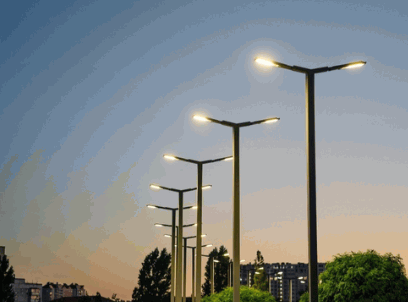
What Are The Social Benefits Of LED Lighting?
LED lighting offers various social benefits such as improved health and safety, enhanced light quality, and enhanced accessibility. These advantages contribute to creating inclusive and comfortable environments for individuals.
Enhanced health and safety are vital aspects of social well-being that are positively impacted by LED lighting. LED lights emit little heat, reducing the risk of burns and fires, and making them a safer option for both homes and public spaces. The high-quality illumination provided by LEDs can help prevent eye strain and headaches, enhancing overall health and productivity.
The enhanced light quality offers a more natural and brighter illumination compared to traditional lighting sources, creating a more welcoming and visually appealing atmosphere. This improved lighting can positively influence one’s mood and mental well-being, making spaces more inviting and comfortable for everyone.
In terms of accessibility, LED lighting can be easily customized to suit different needs, such as dimmable options or color variations. This flexibility makes it easier for individuals with specific requirements to adjust the lighting according to their preferences, thus increasing inclusivity and usability for all users. By enhancing health and safety, improving light quality, and increasing accessibility, LED lighting plays a crucial role in creating inclusive and accommodating spaces for diverse individuals to thrive.
Improved Health And Safety
LED lighting enhances health and safety through improved light quality and reduced heat emission, promoting comfortable and secure environments. Organizations like the International Dark-Sky Association advocate for responsible lighting practices for public well-being.
Proper lighting is crucial in ensuring that spaces are not only well-lit but also conducive to health and safety. LED lights are renowned for their ability to emit bright, natural light that closely resembles daylight, which has been shown to positively impact mood and productivity.
Plus the quality of light, LED technology also produces significantly less heat compared to traditional lighting options. This not only reduces the risk of accidental burns or fires but also helps in maintaining a more comfortable ambient temperature.
By working closely with organizations like the International Dark-Sky Association, communities, and businesses can implement smart lighting solutions that minimize light pollution, enhance visibility, and create safer outdoor environments for everyone to enjoy. It’s all about striking the right balance between functionality, aesthetics, and public well-being.
Better Quality Of Light
LED lighting ensures better quality of light through advanced beam design, reducing light pollution and enhancing visual comfort. Initiatives in cities like Pittsburgh emphasize the importance of quality lighting for urban environments.
Innovative beam designs in LED lighting play a crucial role in directing light precisely where it is needed, reducing glare and light spillage. This focused illumination not only enhances visibility but also contributes to a more pleasant urban ambiance, promoting a safer and more inviting environment for pedestrians and drivers alike.
In addition, the emphasis on reducing light pollution through LED lighting solutions aligns with sustainability goals, helping to preserve the natural nocturnal environment and minimize disruption to wildlife.
Accessibility
LED lighting enhances accessibility with its low-voltage operation and widespread adoption in regions like the United States.
LED lighting, known for its energy efficiency and durability, has become a go-to option for individuals and businesses seeking reliable lighting solutions.
The low-voltage operation not only reduces electricity costs but also enhances safety by minimizing potential electrical hazards.
The widespread availability of LEDs in stores and online platforms makes it convenient for consumers to access a wide range of lighting options suitable for diverse applications.
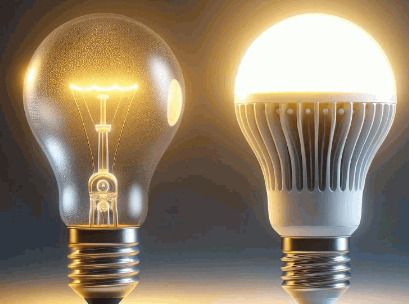
What Are The Challenges Of Implementing LED Lighting?
Despite its benefits, implementing LED lighting poses challenges including high upfront costs, restricted color choices, and disposal concerns. Experts like Alex Connell highlight the need to address these obstacles for widespread LED adoption.
Although the initial expenses of LED lighting may deter some businesses and individuals, the long-term savings in energy costs and maintenance outweigh the upfront investment. The limited range of color choices in LED lighting can be a challenge for those seeking specific ambiance or lighting effects. Proper research and consultation with professionals like Alex Connell can help navigate these restrictions and find creative solutions to achieve the desired lighting aesthetics.
High Upfront Costs
One of the primary challenges in adopting LED lighting is the high upfront costs of LED products, which can deter potential users despite their economic benefits. Retailers like Home Depot offer solutions to make LED technology more accessible to consumers.
LED lighting offers significant long-term savings through energy efficiency and durability, but the initial expenses can be a deterrent for many consumers. The high cost of LED products may make individuals hesitant to make the switch, even though these lights can significantly reduce electricity bills over time.
Retailers like Home Depot have recognized the importance of addressing this obstacle by providing discounts, rebates, and financing options to encourage more people to embrace LED technology. By making LED lighting more affordable and accessible, these initiatives aim to accelerate the widespread adoption of energy-efficient lighting solutions.
Limited Color Options
Another hurdle in LED lighting implementation is the limited color options compared to traditional lighting sources. Innovations like Aluminium Composite Panels offer solutions for expanding color choices and enhancing design flexibility with LEDs.
LED lighting has been a popular choice for its energy efficiency and longevity, but the lack of diverse color options has often posed a challenge for designers and architects. When compared to conventional lighting sources such as incandescent or fluorescent bulbs, which come in a wide range of colors, LEDs have traditionally been limited to a more narrow selection. This limitation has restricted creativity and versatility in lighting design projects, especially when specific color schemes or aesthetics need to be achieved.
Aluminium Composite Panels represent a breakthrough in addressing this issue by providing a broader spectrum of colors and finishes that can be seamlessly integrated into LED applications.
Disposal Of Old Lighting
Proper disposal of old lighting fixtures poses a challenge in transitioning to LED technology, requiring efficient recycling solutions. Companies like HyLite LED Lighting focus on sustainable disposal practices to address environmental concerns related to old lighting products.
Switching to LED technology involves more than just replacing bulbs; it is essential to consider the responsible disposal of outdated lighting fixtures. Without efficient recycling mechanisms in place, these old fixtures can end up in landfills, contributing to environmental degradation. By collaborating with companies like HyLite LED Lighting, businesses can ensure that their old lighting products are recycled and reused, promoting a more sustainable approach to waste management in the lighting industry.
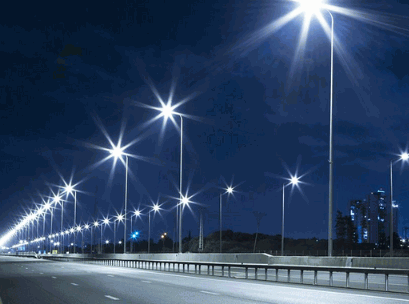
How Can Individuals And Businesses Switch To LED Lighting?
Transitioning to LED lighting involves steps like replacing existing bulbs, upgrading fixtures, and partnering with sustainable companies. Aligning with the UN’s global sustainable development goals, this switch to LED supports eco-conscious practices.
When making the move to LED lighting, individuals and businesses can start by assessing their current lighting setups to identify areas that can be upgraded. Replacing inefficient bulbs with energy-efficient LED options can result in significant cost savings and reduce energy consumption. Considerations should also be given to updating fixtures to accommodate LED technology efficiently and effectively.
Forging partnerships with sustainable providers helps ensure that the LED products being utilized are produced and disposed of responsibly. By aligning with the sustainability objectives laid out by the UN, the transition to LED lighting not only benefits the environment but also supports broader efforts towards a more sustainable future.
Replacing Existing Bulbs
One method to switch to LED lighting is by replacing existing bulbs with energy-efficient LED alternatives, offering extended service life and improved artificial lighting solutions for residential settings.
LED lighting has gained popularity for its numerous benefits, including significant energy savings and a longer lifespan compared to traditional incandescent or fluorescent bulbs. The transition to LED not only reduces electricity bills but also contributes to environmental sustainability by lowering carbon emissions.
The improved lighting quality provided by LED bulbs enhances the ambiance and visibility in residential spaces, creating a more comfortable and aesthetically pleasing environment. With options ranging from warm to cool white hues, LED lighting allows for customization to suit different preferences and settings.
The durability of LED bulbs reduces the frequency of replacements, resulting in lower maintenance costs over time. This makes them a cost-effective long-term lighting solution for households looking to upgrade their lighting systems.
Upgrading Fixtures
Upgrading fixtures to incorporate LED technology is crucial for businesses looking to enhance industrial lighting solutions. LED’s design flexibility allows for customized lighting designs tailored to specific industrial requirements.
Not only do LED fixtures offer superior energy efficiency, but they also provide significantly longer lifespans compared to traditional lighting options. This longevity translates to reduced maintenance costs and increased overall cost savings for businesses. The ability to dim or brighten LEDs easily allows for dynamic control over the lighting environment, enhancing productivity and creating a more comfortable work atmosphere.
Partnering With Sustainable Companies
Collaborating with sustainable companies like LED LightSense is a strategic approach for individuals and businesses to switch to LED lighting. These partnerships promote environmental benefits and support sustainable lighting initiatives.
By teaming up with responsible companies such as LED LightSense, individuals and businesses can easily make the transition to LED lighting technology while aligning with eco-friendly practices. The collaborations not only help in reducing energy consumption and carbon footprint but also drive cost-efficiency and long-term savings.
Partnering with such sustainable companies reinforces the commitment toward environmental stewardship and encourages the adoption of energy-efficient practices in everyday lighting solutions.

